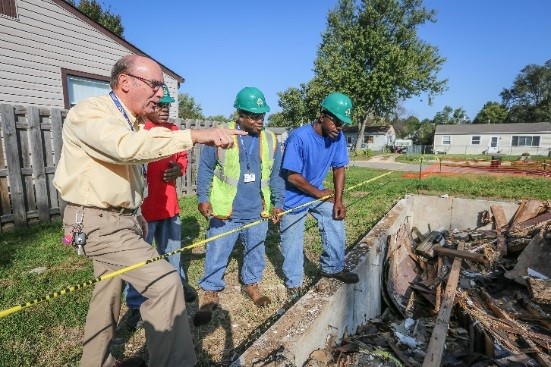Federal Dollars Put to Work
The Illinois housing market closed on a high note, with December posting increases in both sales and median prices. According to the Illinois Association of Realtors®, the strong month capped off a 2015 housing market that showed a return to a more balanced market with total year-end sales and median price gains surpassing 2014. However, that’s not to say that the impacts of the foreclosure crisis are gone. In fact, there’s real work left to be done.
Hidden Impact of Foreclosures
New research by the Regional Economic Applications Laboratory (REAL) at the University of Illinois shows that homeowners who escaped foreclosure themselves, but live in neighborhoods hit the hardest by foreclosures, face an additional threat – lower selling prices. REAL looked at sales data from Chicago neighborhoods between 2008 and 2012 to determine the impact foreclosures were having on nearby properties. The findings: prices for non-distressed properties in the hardest hit neighborhoods declined by thousands of dollars.
Help Is Available
To help communities and homeowners fight back, the Illinois Housing Development Authority created the Blight Reduction Program (BRP) in 2014 under the Hardest Hit Fund Program (HHF) and funded through the Troubled Asset Relief Program (TARP), a U.S. Treasury managed resource dedicated to foreclosure prevention and neighborhood stabilization.
“The Blight Reduction Program is a great tool that allows us to put federal funds to work in Illinois communities,” said Audra Hamernik, IHDA Executive Director. “Our goal, when choosing partners is to collaborate with communities that have a demonstrated need, but also have elements in place that we can build upon to ensure our investment makes the greatest impact possible. Through BRP, we are able to address the economic, public safety and quality of life issues abandoned and foreclosed properties impose on our communities and our citizens.”
According to the Center for Community Progress, for every dollar spent to clean and green vacant properties, neighbors experience $224 in increased property value and the community see an additional $7.43 in tax revenue.
Through the BRP, IHDA works directly with units of local government and not-for-profit partners to help decrease preventable foreclosure and stabilize neighborhoods. Specifically, the program allows communities to target blighted, vacant residential properties for demolition, greening and eventual reuse, or redevelopment.
Going Green
Winnebago County received funding under BRP for an innovative plan submission that included training unemployed and underemployed people to deconstruct vacant homes. Working with Comprehensive Community Solutions (CSS), a not-for-profit whose focus is ‘building human capital’, the county was awarded $350,000 in March 2015 and $840,000 in February 2016 to acquire and demolish approximately 35 blighted properties.


